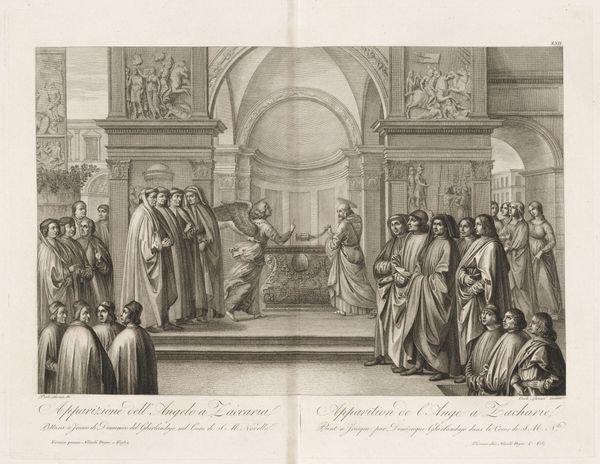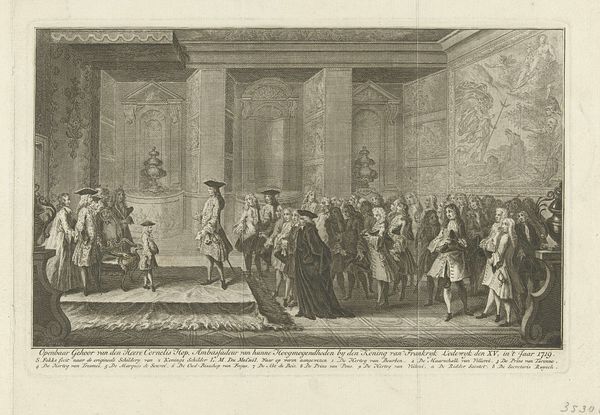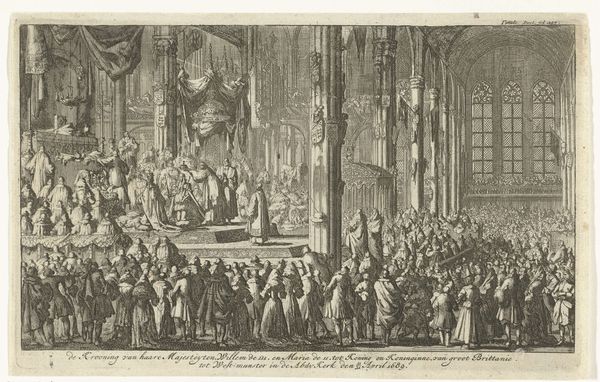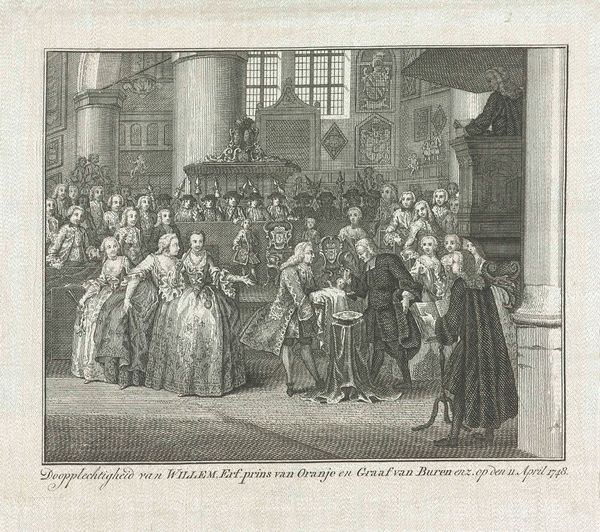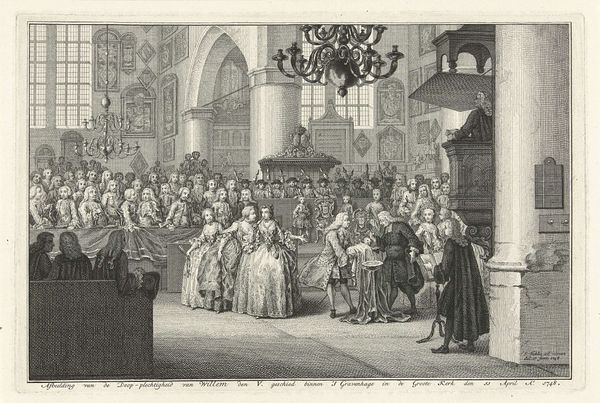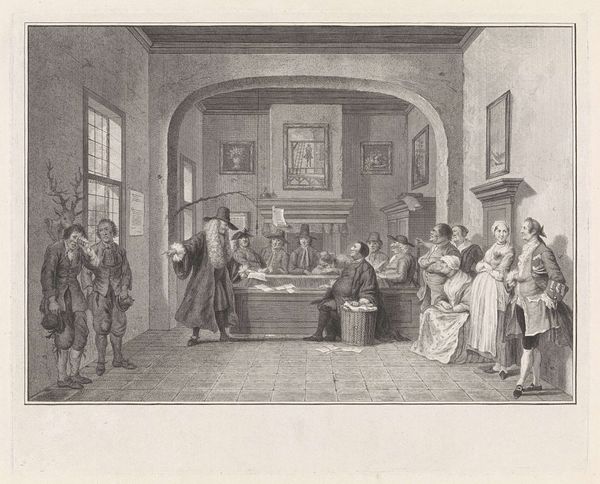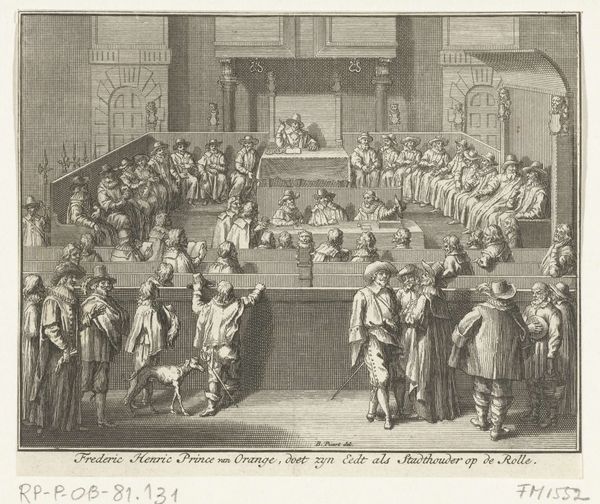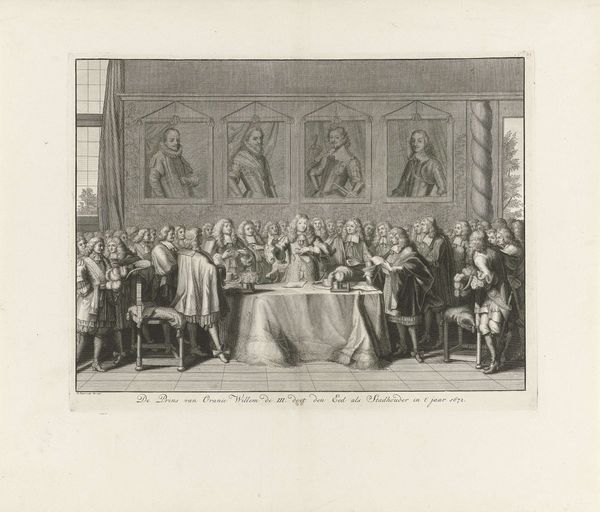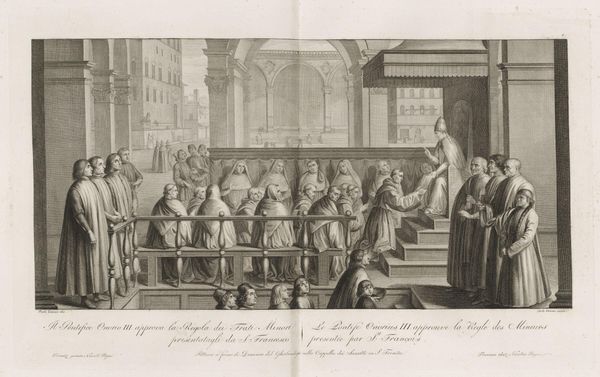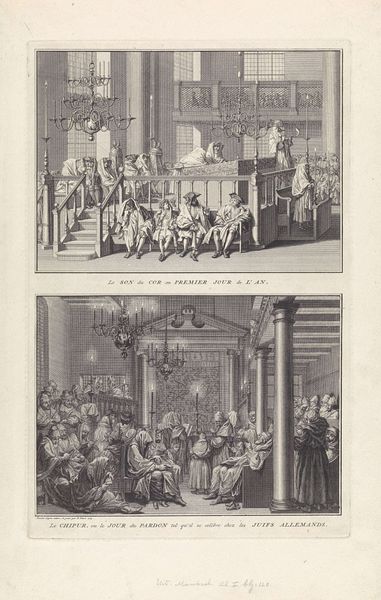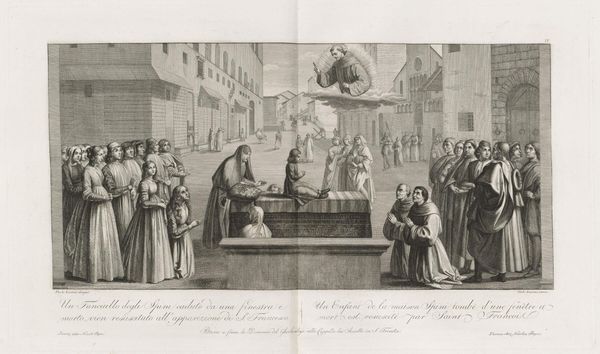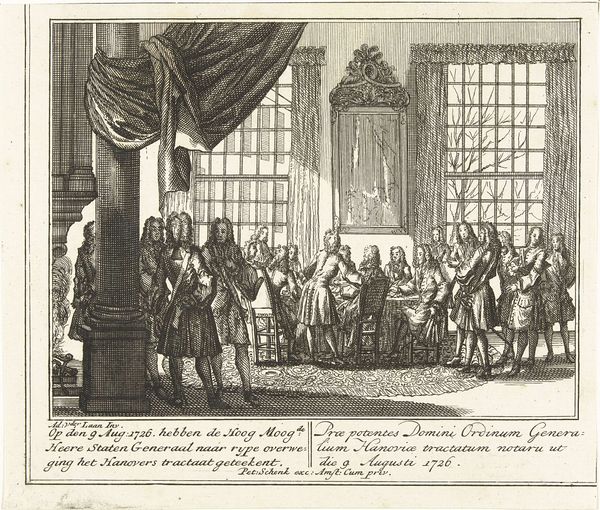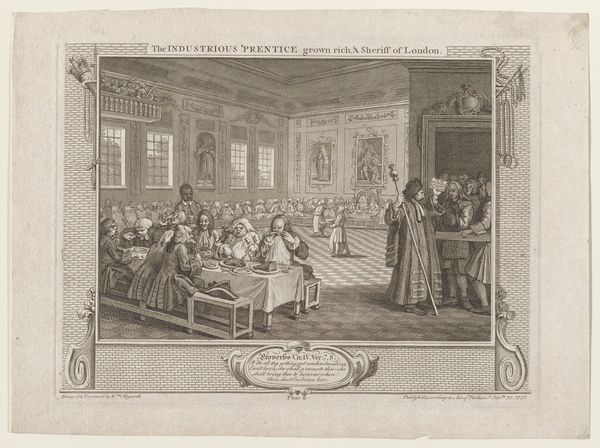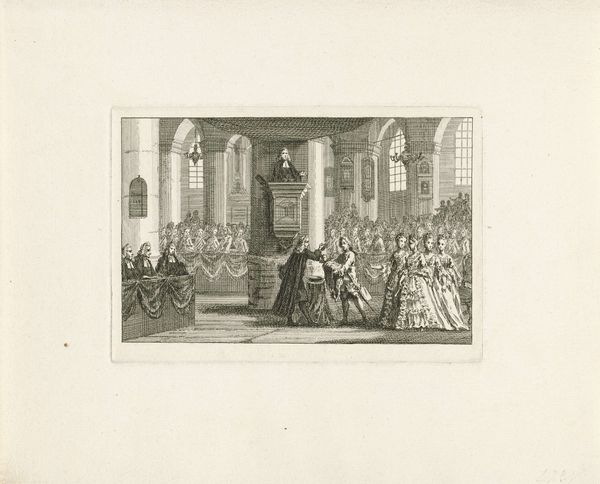
Dimensions: height 139 mm, width 188 mm
Copyright: Rijks Museum: Open Domain
Curator: At the Rijksmuseum, we're looking at "The Appeal of the Jansenists, ca. 1723," an engraving that historians estimate was made sometime between 1753 and 1799. Editor: My initial feeling is one of subdued tension. The composition, with its tightly packed figures and architectural backdrop, seems to amplify a sense of restrained anxiety, don't you think? Curator: I agree, the crowded space certainly hints at unease. This engraving illustrates a significant historical moment. It depicts members of the Jansenist movement, including archbishops and clergy from Utrecht and Haarlem, seeking refuge in the Netherlands to escape persecution. The engraving serves as a visual document of religious and political tensions during the 18th century. Editor: Notice how the artist uses line to create subtle gradations of tone, achieving a rather compelling sense of depth. And the almost rhythmic repetition of the figures is punctuated by distinct groupings. There’s certainly a pattern being reinforced in the chaos of so many bodies together. Curator: Absolutely. The visual pattern adds to our understanding of this period. Jansenism, with its emphasis on personal piety and a stricter interpretation of Augustinian theology, often clashed with established religious and political authorities, making scenes such as this quite common. Editor: The somber attire also reinforces the sober mood. The artist draws focus on certain central characters through details in the face. It makes one wonder what is going through the subjects’ minds in such moments. Curator: Indeed. Prints like these played a vital role in shaping public opinion and documenting socio-political upheavals of the era. "The Appeal of the Jansenists" acts as both historical record and as political commentary. Editor: Studying this piece really makes you realize the ability of such precise visual elements working together to communicate even quite intricate historical realities. Curator: Agreed. This image deepens our comprehension of the challenges confronting marginalized groups during this pivotal epoch in European history.
Comments
No comments
Be the first to comment and join the conversation on the ultimate creative platform.
